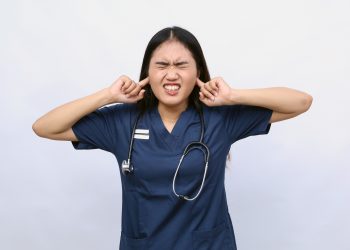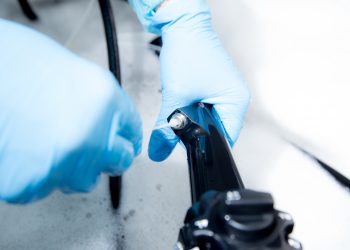In my last installment, I discussed supplements for general health and joint and muscle relief, as I followed my mother’s alchemist footsteps in seeking supplements to improve my health, and followed my own scientific training to review and potentially discard supplements that no longer had sufficient science to support their use.
How to choose what supplements to take? A refresher:
- needs to have peer-reviewed and published clinical data
- add only one new supplement at a time
- reassess in 1 month/bottle (If questionable improvement in symptoms, stop the supplement and see if symptoms If asymptomatic, are there possible lab tests to verify improvement?)
- review your supplements every six months—science changes!
Here is a list of what I choose to take daily, minus the prescriptions:
Womens MVI Vitafusion 2 qD
Biotin 5000 mcg qD pending
Turmeric, 2 grams qD–yes!
Omega 3, 2000 mg (vegan, not fish oil–pending)
CoQ10, 100 mg qD–yes!
Amla fruit, 1 gram qD–pending
B12, 1000 mcg qD–yes!
Magnesium oxide, 300 mg qD–yes!
Vitamin D3 5000 iu gelcap qD–discussion with internist, possible discontinuation and recheck levels Boswellia serrata, 500 mg qD–yes!
Quercetin, 500 mg with bromelain, 100 mg qD–pending
Last issue I decided to stop daily multivitamins, biotin, and probably vitamin D, despite a confirmed deficiency. So let’s continue my semiannual, objective, virtual hike up my pill mountain together.
“It’s easy to tell the difference between good cholesterol and bad cholesterol. Bad cholesterol has an evil laugh.” – Randy Glasbergen (cartoonist)
Elevated Cholesterol
My family suffers from cardiovascular disease: heart attacks both fatal and non-fatal in my father, maternal grandfather and maternal uncle, stroke for my maternal grandmother. I had been reluctant to start a statin for years due to episodes of “big kahuna” statin myositis in both Dad and me. Thank goodness for my patient and persistent internist getting me started on subtherapeutic statin, which I am finding tolerable. Next step may be a therapeutic dosage!
While reviewing for this installment, my eyes happened upon my Pravastatin bottle … with NIGHTTIME dosing instructions. Silly me, I’d been taking the Pravastatin in the morning with my pill pile. However, upon research, I discovered Pravastatin (and about half of the statins) are “short acting,” with Pravastatin only sticking around in the bloodstream for about 8 hours. As the liver predominantly produces cholesterol at night (duh), the Pravastatin lowers cholesterol better when it is available in the liver during those hours to block cholesterol synthesis. A learning experience, and now I will take my Pravastatin with bedtime dosing for improved control. Other bedtime, short half-life statins include Simvastatin and Fluvastatin. Check with your doctor or pharmacist if you, too, haven’t been reading your own labels!
Back to cholesterol elevations. The newest information (from this fall’s International Conference on Nutrition in Medicine) suggests that your annual or semiannual lipid panel levels don’t do much to prevent heart attacks or strokes, as the lipids seem to modulate/change between the several forms. However, medicine now suggests that everyone have a once-per-lifetime test for Lp(a) (say “Lipoprotein little a” or “LP little a” to sound informed), a new independent marker for cardiovascular disease. From what I understand, the protein Lp(a) wraps around the LDL cholesterol, and the combination is sticky, so it firmly attaches to the artery endothelium, promoting
atherosclerotic plaques.
Why would your body make this deadly stuff? Researchers hypothesize that it may have provided a survival advantage by aiding in wound healing and reducing bleeding, particularly in childbirth. It affects 1 in 5 people and is more common in blacks of African descent and South Asians. It is genetic, so a positive test should lead to your relatives being tested as well. Researchers are still trying to figure out the best way to manage an elevated Lp(a); review the ACC guidelines for more1 if you or yours test positive.
However, it seems clear that rather than a lipid panel, a panel that contains APO-B corresponds better to the levels of damaging LDL particles in the bloodstream. Dr. Thomas Dayspring, the reigning king of lipids, suggests that an APO-B level yields better information about cardiovascular risks, especially if you’re being currently treated with statins—I encourage you to view some of the numerous videos of Dayspring’s (charming, and discordant with my previous cholesterol knowledge education), and unravel the cholesterol knot for yourself. The lipid story has changed yet again.2 As Dr. Dayspring says, “The graveyard is full of people with high HDL cholesterol.”
“What do you call a fat alien? An extra-cholesterol.” – Unknown
So other than Pravastatin, what am I doing for my cholesterol numbers—or, being modern, my elevated APO-B levels?
DHA and EPA, the active components in fish oil, are in retreat; current studies do not support a drop in cardiovascular events with high blood levels of Omega 3 fatty acids.3 When I complete my current bottle of algae-derived “fish” oil (in my quest to be a good vegan, I bought this expensive peppermint scented stuff), I’ll stop this supplement.
Other options include green tea, ground flaxseed, garlic and niacin. Meh—none as strong as the statin I’m on, although I’ll continue to enjoy my culinary garlic and my hot jasmine green tea.
“Healthy Diet Day 1: I have removed all the bad food from the house. It was delicious.” – Unknown
I’ll also redouble my efforts at being a clean-eating vegan for the inherent cholesterol, diabetes and weight benefits.4 In the recent meta-analysis of thirty RCTs, the vegan diet outperformed the omnivores as expected, with reduced total cholesterol, low-density lipoprotein cholesterol, and apolipoprotein B levels with “mean differences of −0.34 mmol/L (95% confidence interval, −0.44, −0.23; P= 1 × 10−9), −0.30 mmol/L (−0.40, −0.19; P = 4 × 10−8), and −12.92 mg/dL (−22.63, −3.20; P = 0.01), respectively.” I’ll also continue the exercise, exercise, exercise—resistance, balance, flexibility and core work.
This will help both my cholesterol management and my T2D.5 Resistance training may help management of Type 2 diabetes by “decreasing visceral fat, reducing HbA1c, increasing the density of glucose transporter type 4, and improving insulin sensitivity. Resistance training may enhance cardiovascular health by reducing resting blood pressure, decreasing low-density lipoprotein cholesterol and triglycerides, and increasing high-density lipoprotein cholesterol.”
“Please don’t sugarcoat it; I’m diabetic.” ~ Unknown
Type 2 Diabetes
A good time to segue to T2D—as both my chosen diet and my exercise plan support the management. I am also on the middle dose of Ozempic, as Metformin had little effect.
But what other supplements have I experimented with?
Amla fruit6 improves both fasting glucose and postprandial glucose, as well as lowering total lipids and cholesterol. Double the dose I chose to take also lowers LDL and raises HDL cholesterol. I’ll keep this antioxidant but not escalate the dosage.
Quercetin7,8 mimics metformin in its antidiabetic effects, and additionally carries anti-oxidative, anti-inflammatory, antiproliferative, anticarcinogenic and antiviral properties. It is considered helpful in combatting age-related disease—so I fit that description8 (insert sad face here). The bromelain9 that comes with it is generally useful as well, with anti-inflammatory, antidiabetic, anticancer, and antirheumatic properties—so I’ll keep this combo for general health.
Thanks for riding along for my review of supplements. I’m pleased to have discarded four, leaving me with seven with decent published evidence to support continuing their use. I’ve added the exercise and the vegan diet, as I believe that they should be prescriptive for good health.
Final tally:
Exercise Vegan diet
Amla fruit, 1 gram qD
B12, 1000 mcg qD
Boswellia serrata, 500 mg qD
CoQ10, 100 mg qD
Magnesium oxide, 300 mg qD
Quercetin, 500 mg with bromelain, 100 mg qD
Turmeric, 2 grams qD
For article references, visit www.endopromag.com.
Author
-

Pat is a retired gastroenterologist and educator savoring the 3rd third of her life in coastal Virginia. She completed her gastroenterology fellowship at the Medical College of Virginia oh, so long ago, and after a 30-year gastro practice in south- eastern Virginia and thriving professional speaker and broadcast career, is a popular provider of second opinions in gastroenterology for 2nd MD, now educating people one by one. You will likely find her in her greenhouse or gardens, either propagating fig trees or growing much of her vegan diet organically with donated rabbit poo.
View all posts




























